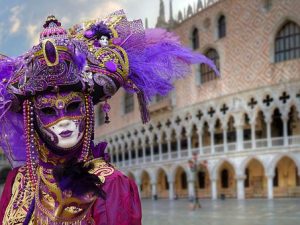Symbols, tools, and metaphors in spirituality

Symbols are something more than just what it presents at the surface. We, humans, are different from many other animals in that way. We can understand the symbols and use them for our benefit.
Symbols can be used almost like self-hypnosis. For example, research shows that looking at the “apple” logo made you more creative compared to a group of people who did not look at the apple logo. Look around you and see that almost every commercial deals with the companies’ symbols or “logos”. The mind processes this information more in-depth, using more brain parts.

There are universal symbols that people generally understand wherever they go. For example, a white pigeon represents the abstract concept of “peace.” Logos use complex and abstract concepts and make them concrete; a person can, for example, be represented by a doll. An apartment can be drawn on a piece of paper. The most important meaning is the meaning that you give it. The symbol is charged, so to speak, when you believe it means something. Then it goes through your subconscious mind and can work like self-hypnosis. Symbols don’t show the brain “directly” what you want; it has to process through the “complex” parts of the mind.
It can be explained by stating that “symbols are the language of the subconscious mind.” This is what gives symbols of power. The significant changes come from the unconscious mind.
You can draw a symbol, imagine a symbol, create a symbol physically, and do many other things. It is, for example, possible to create a symbol using your own body, standing in different postures. You could make a rose with your arms and legs. This has a hypnotic effect; you could look at a rose and imagine a rose, but why not “become a rose” by using your body? Some Rituals use this language of the subconscious mind. Rituals can function symbolically and express an intent using more power of your mind.

Why do people use symbols? It’s the same reason people use hypnosis since it triggers the unconscious part of the mind. People in hypnosis know that saying a statement has a specific power/effect. But saying the same sentence to somebody in a trance (alpha, theta, or delta state) will have more power/ effect. So understanding that symbols get translated by the unconscious mind explains why they can have power and impact.
The collective unconscious
According to Carl Gustav Jung, there exists a collective unconscious. If a group of 100 people strongly believed in an entity, described it similarly, and thought it accurate. They could create an entity in the heavenly realm, giving it life. Imagine millions of people believing in something. An example of a symbol from the collective unconscious could be a river. It symbolizes releasing; maybe some of you readers have got that image while releasing or getting healing. Other known collective symbols or archetypes you can dream about might be The sun, snakes, the shadow, and a wizard.

So there are a lot of alternatives: You could create something new from the beginning, or you could hijack something that exists from before (like Hitler did with the swastika symbol), or something/somebody that exists can get more power by giving it even more attention. If the emblem receives a similar type of attention, that is just like having a firmly focused intent or coherent thought streams. By the way, Hitler combined an existing symbol, linking it with a physical movement while simultaneously taking a sentence.
You could give meaning to any object, but it may be wise to use symbols that already exist and are already fueled by thousands or millions of people. It is possible to take anything and make it represent anything. Take, for example, numbers, and give each number a meaning. And then write a number on your house. This number could translate to: “Only friendly beings get access to this house.”
You could give a square a specific meaning, then a triangle a certain sense, and finally, a circle a meaning. And draw them inside each other, which will have the meaning you give them. Or you could get a sword and give it a purpose, a skull, or anything else. It’s totally up to you how you want what to be symbolizing. You could take basic stuff, like eggs, paint, wood, and water and give them special meaning. And suddenly, you have your own “spell.”

We have a lot of rituals and symbolism in our world. Think of confirmation, marriage, golden rings, funerals, and many buildings like obelisks, pyramids, etc. People may put intention into things, buildings, numbers, colours, etc. The most crucial part is you decide what it shall mean for you.
Power objects
You can program dolls and figures with focused intentions. Let’s say there exists a totem pole that stands someplace for hundreds of years. It gives meaning to everybody who looks at it. Generation after generation keeps charging/ fueling this with intention, feelings, thoughts, and attention. Then, this object will behave accordingly to the sum of all the intentions. The Power object can, for example, scare people.
Another example could be a glass of water and focus on this water to bring you health. When you drink it, it will have the sum of the intention you have projected into it. You can program things in all kinds of different ways. You could program pictures on the wall to influence you when you walk past it. If you have a picture of a tree, you may intend that every time you pass that picture, you get “grounding” by programming the images (projecting feeling and thoughts into it). Or you could program your bed to fill you with energy each night you sleep. Of course, it works best with coherent thought steam (concentration) and when in a trance.

Inner symbolism
Even when you visualize – the inner pictures on your mental screen are an extension of your intentions. You could use intention alone (without the images), but the pictures function like a TOOL to express your purpose. There are a lot of good metaphors people use. For example, counting down from 10 to 1 gets you into a trance because the numbers counting down gives meaning to you. They represent a concept. Without the counting metaphor, you could also go into a trance with pure intentions alone.
What modality, kinetics, visual or auditory, varies from person to person. Also, people’s symbols and metaphors differ; people can relate to some symbols more than others. Use what works for you; this can be different for different personality types, and what culture you are from could explain your different choices in symbols. In Buddhism, they operate with the sound of Ohm. Islam uses abstract imagery, often on carpets, to represent god.
Another type of symbolism is role play. This makes it easier for people to change themselves. Some think improving themselves, their thoughts, and their beliefs is scary. But if it is role play, then it is ok. Many people in the self-help industry find that “fake it to you make it”, and modelling helps. People also use masks sometimes to get the attributes of the mask symbolically. For example, they are using a mask of a type of person or an animal. Receive the characteristics of that archetype or animal.

Another famous metaphor is that white light represents healing. But if you intended to heal somebody remotely could use a black light, and people would get healthy as well. The intention counts, and the metaphors and the symbols are just tools to help you sort out, point out, and show you a direction of what you want. When reaching for changes, willing and wanting things, using your whole brain (as many parts and functions as possible) is helpful. Therefore Symbols, physical postures, and inner images are valuable – for expressing an intention. Share this knowledge and make the wisdom of symbols even more significant in the population.



So much wisdom. It was great to read that NO religion or myth owns the truth, that everybody just uses their metaphors to explaining phenomena from their cultural perspective.
All the paranormal is happening and translates by the individual’s metaphors.
Thank you! check out our latest posts!
We have been active lately 😉
Pingback: Clairvoiance -